Original text by Marina Belova
Let me tell you how I made my first free-standing appliqué. I never had any reason to do such a thing, so, having perused several sources of information on the subject, I decided to give it a try. Curiosity, you know.
It took me some time to choose a design, and in the end, I opted for a free one from one of the Western websites. I don't remember which one.
This is the original design:
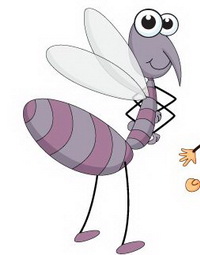
As I needed to create an insect, I settled on organza leftovers as a fabric for my appliqué. Gray for the back side of the wings and milk-white for the front. I thought it would make the appliqué look better.
A separate 2-stage file was created for the wings.
I outlined the wings with satin stitches of the constant width.
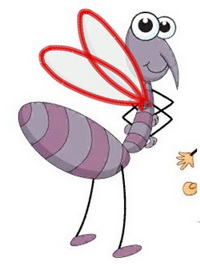
Separated the wings from each other and placed them in a row so that it would be easy to cut the fabric near the border.
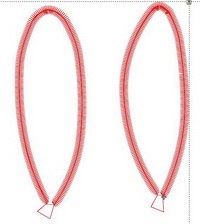
I decided against satins in the areas covered with mosquito's body in order to avoid excessive density. In the original design, the wings were superimposed, and 2 layers of satin borders would result in a bump under the element on top of them. Therefore, in the lower part of the wings, I replaced them with running stitches.
After that, I created the main file with the rest of the design:
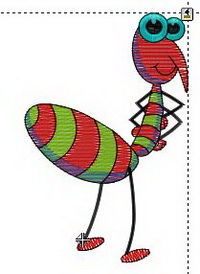
This is where the machine goes in.
For the wings, I hooped 2 layers of organza without any stabilizer whatsoever.
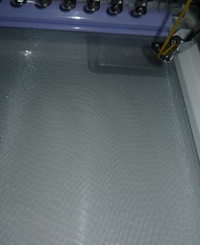
Embroidered them:
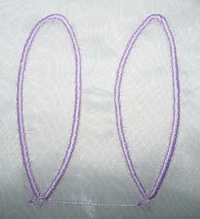
Trimmed carefully along the satin border. I left a margin in the lower part of the wings that was to be covered with mosquito's body. I reasoned in this way: better to leave a margin and be sure that everything would be firmly attached. It could be carefully trimmed and the leftovers singed afterward:
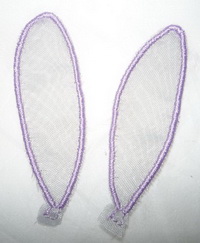
After that, I hooped my basic fabric and began to embroider the rest of the design. When digitizing, I placed all the background elements first in the line:
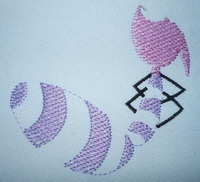
This instantly showed me where to place the wings on a mosquito's body in order for them to be properly covered: a small empty wedge under the head. I tried to arrange the wings inside this wedge, securing them with pins. It would be much more convenient to attach them with the help of temporary spray adhesive, but it wouldn't hold organza in place. So I made do with what little I had:
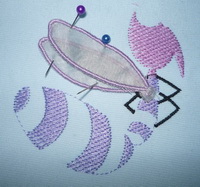
After that, the machine did a tacking stitch that attached the wings to the chosen place. Right after an appliqué was topped with an element that was supposed to cover its edges. I had to trim the organza margin, after all, to prevent it from sticking out.
Then the embroidery proceeded to its end.
Here's the mosquito I got as the result: It has some weak points, but overall looks impressive. Thanks to the wings, of course.
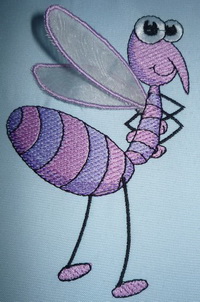
The embroidery process when employing this technique is rather demanding and requires diligence. But the effect is worth it and, besides, it only takes 7500 stitches.



There are no reviews to display.